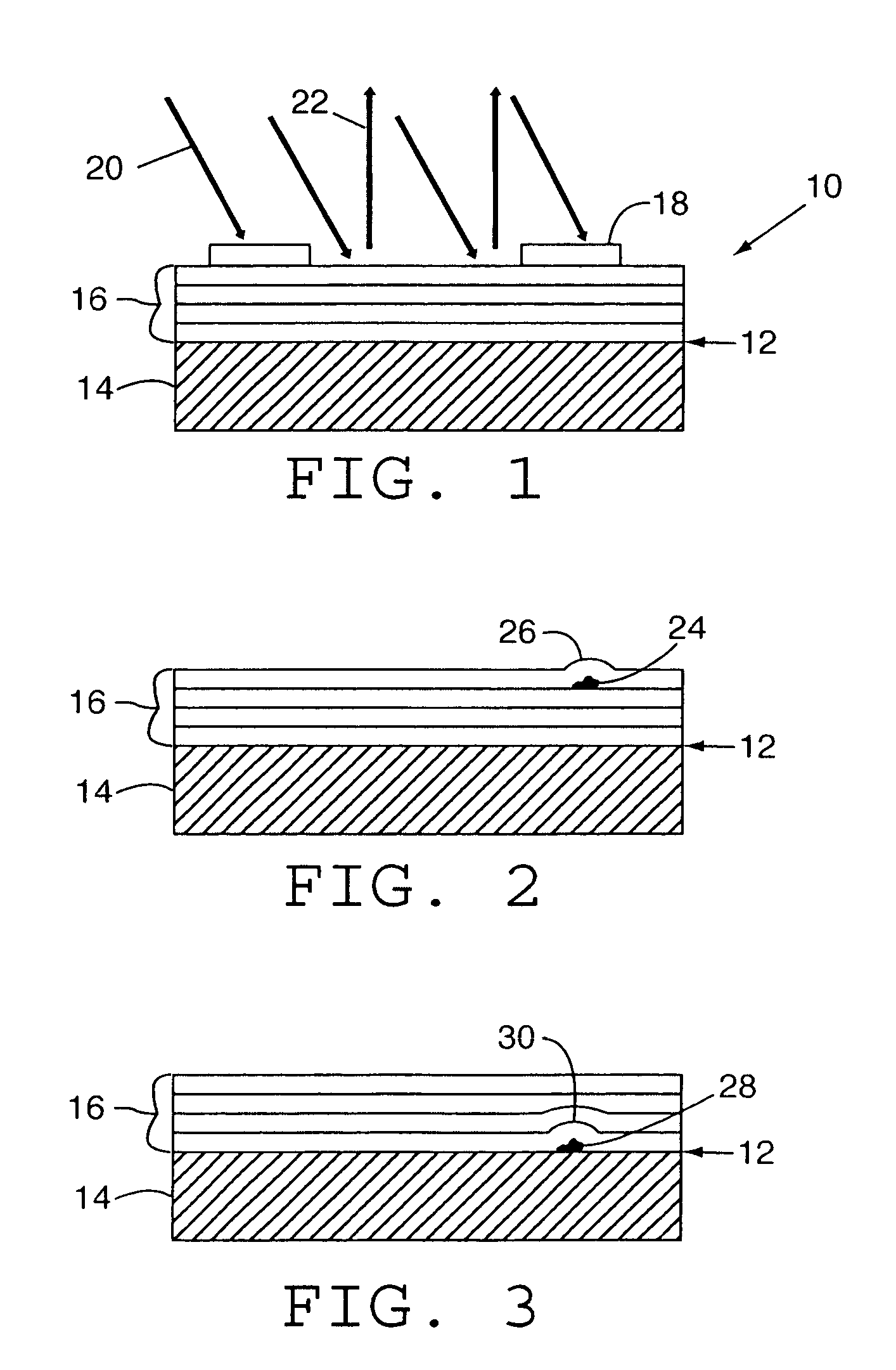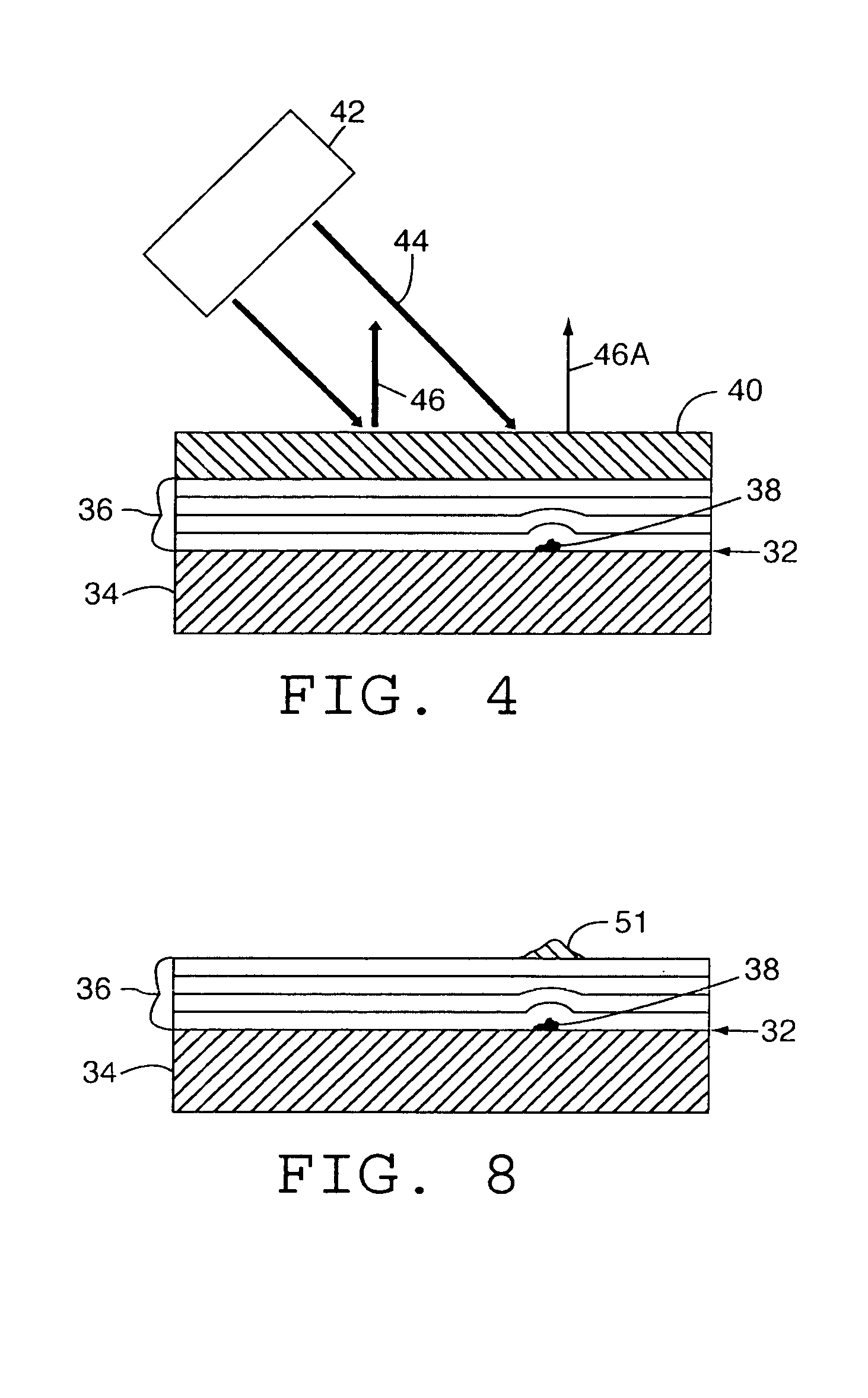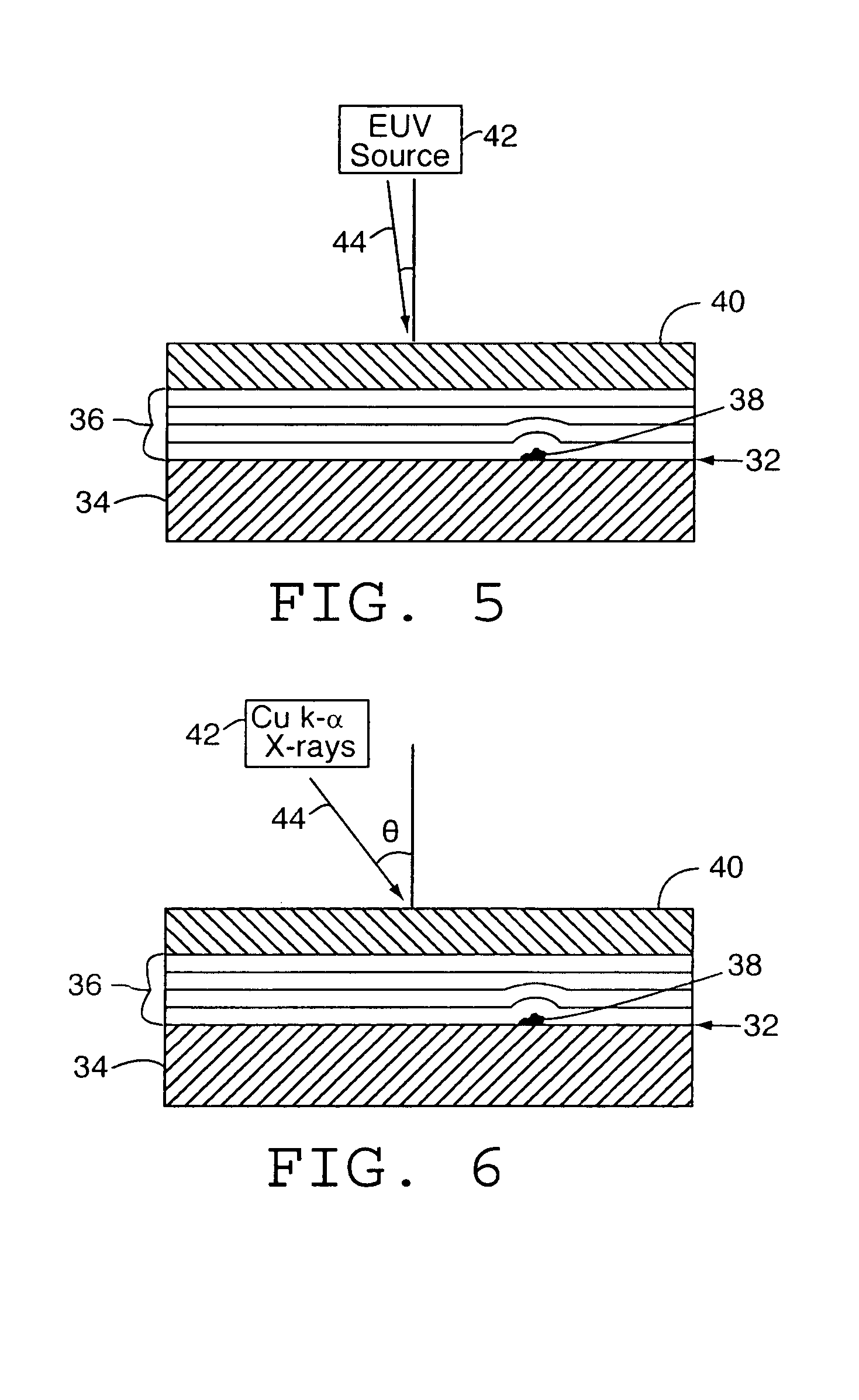Defect inspection of extreme ultraviolet lithography masks and the like
a technology of ultraviolet lithography and masks, applied in the field of masks, can solve the problems that the photoresist in the area corresponding to a defect will not receive a sufficient dose of radiation to be fully developed, and the inspection system appears to have a defect in the field of view, so as to achieve high sensitivity
- Summary
- Abstract
- Description
- Claims
- Application Information
AI Technical Summary
Benefits of technology
Problems solved by technology
Method used
Image
Examples
Embodiment Construction
[0023]A method for the detection of defects in extreme ultraviolet (EUV) lithography masks and the like in accordance with the present invention now will be described in detail beginning with reference to FIG. 4. FIG. 4 is a schematic cross-sectional illustration of a lithography mask blank 32 (e.g., an EUV lithography mask blank) to be inspected for defects in accordance with the present invention. As discussed above, the EUV mask blank 32 may include a reflective substrate 34 upon which is formed an interference stack 36, which enhances the reflectivity of the mask blank 32. One or more defects 38 may, or may not, be present in the mask blank. As is discussed above, a defect 38 in the mask blank, e.g., on or near the surface of the substrate 34 or in the interference stack 36, may destroy the effectiveness of a lithography mask formed from the mask blank 32. Specifically, the defect 38 in the mask blank will cause a phase shift in the EUV or other radiation reflected from the mask...
PUM
| Property | Measurement | Unit |
|---|---|---|
| EUV reflectivity | aaaaa | aaaaa |
| size | aaaaa | aaaaa |
| size | aaaaa | aaaaa |
Abstract
Description
Claims
Application Information
 Login to View More
Login to View More - R&D
- Intellectual Property
- Life Sciences
- Materials
- Tech Scout
- Unparalleled Data Quality
- Higher Quality Content
- 60% Fewer Hallucinations
Browse by: Latest US Patents, China's latest patents, Technical Efficacy Thesaurus, Application Domain, Technology Topic, Popular Technical Reports.
© 2025 PatSnap. All rights reserved.Legal|Privacy policy|Modern Slavery Act Transparency Statement|Sitemap|About US| Contact US: help@patsnap.com



